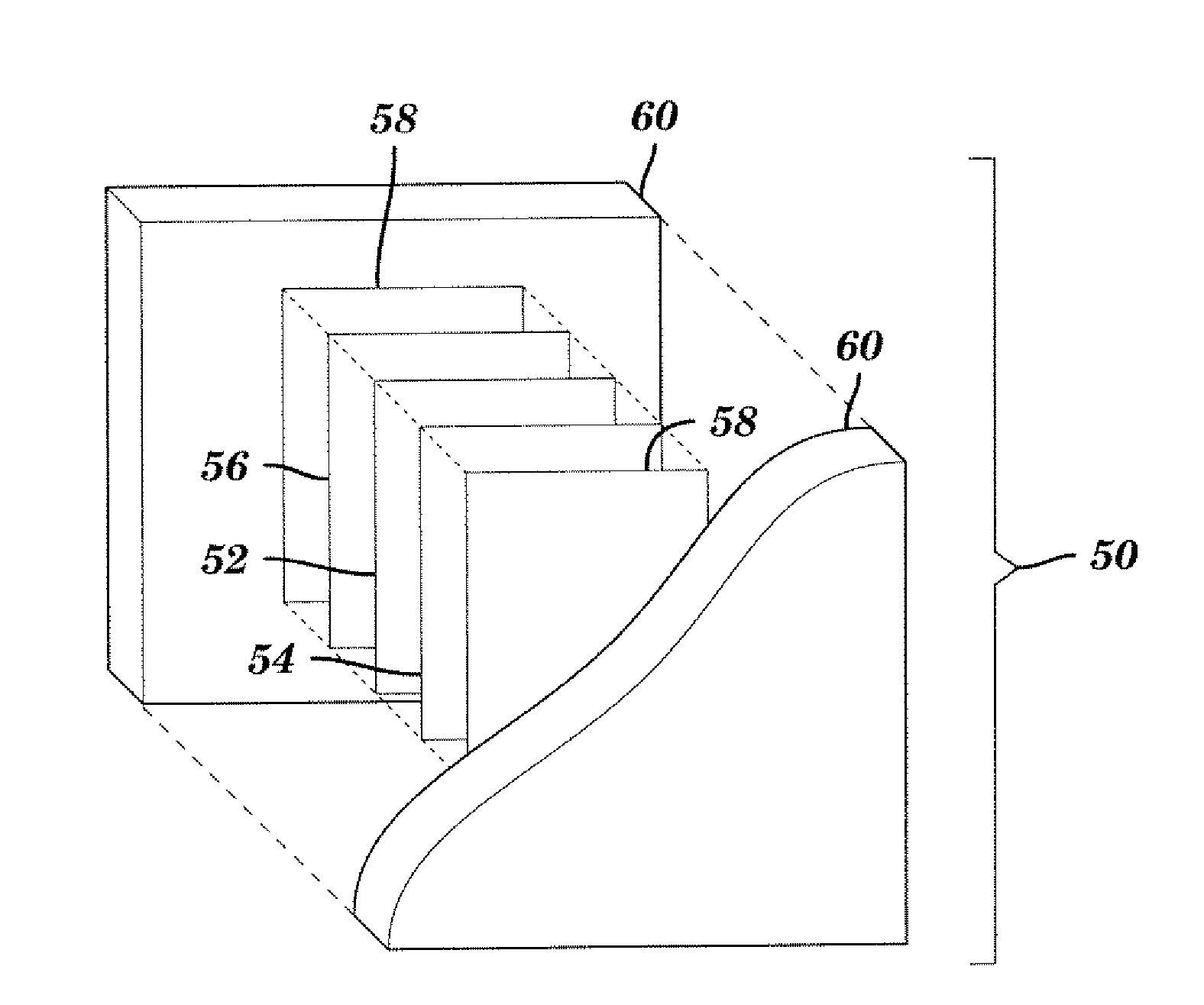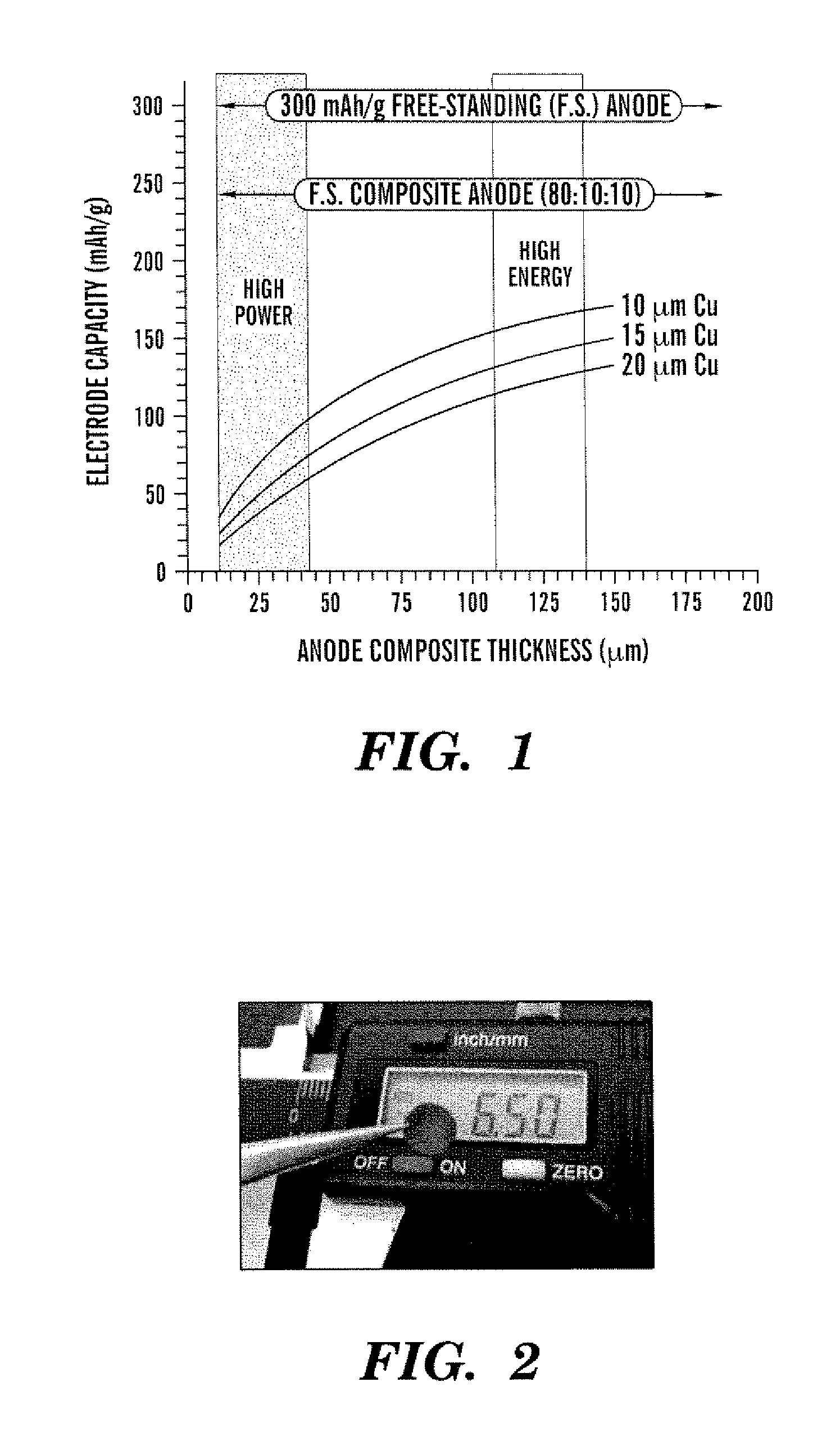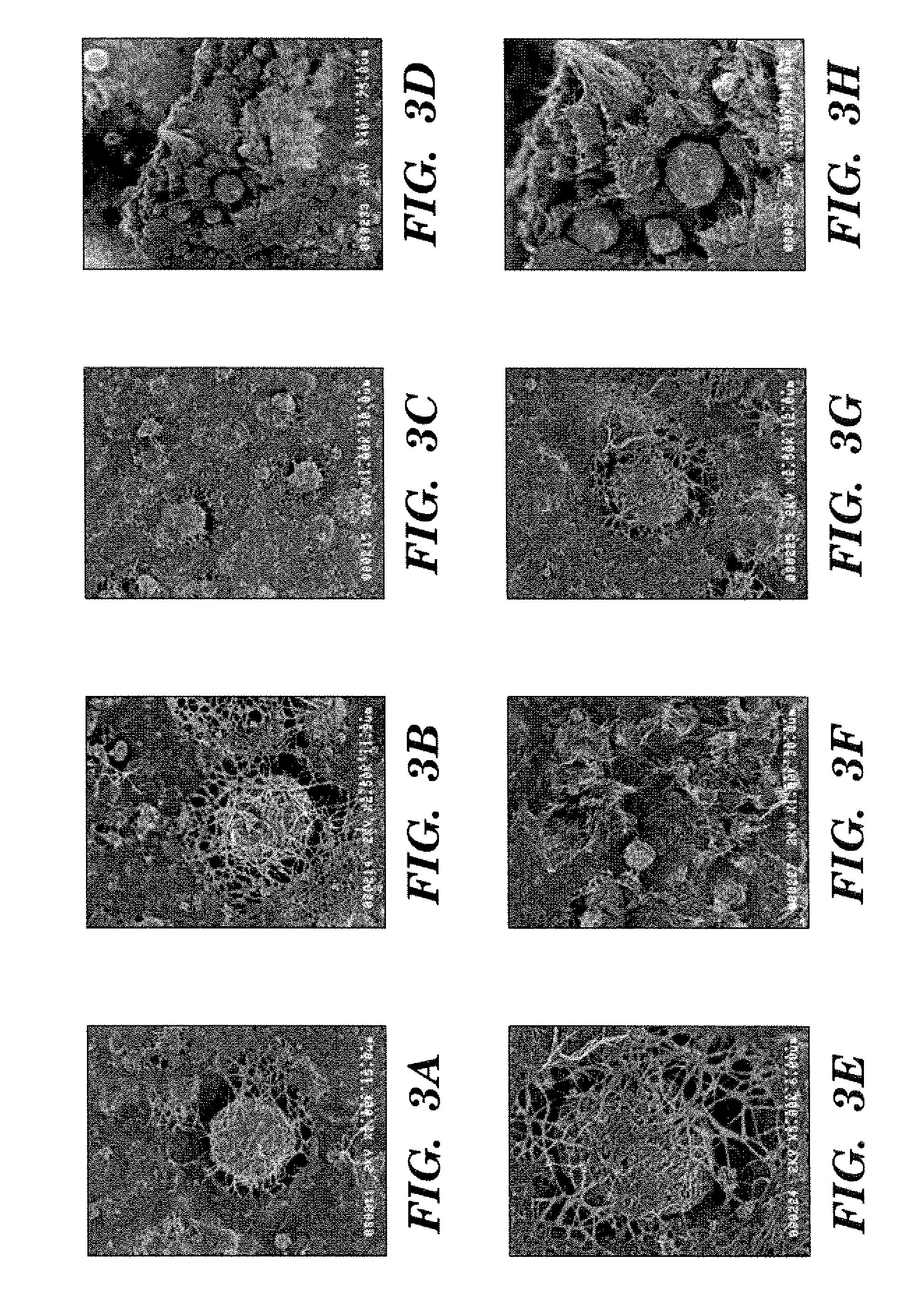Freestanding carbon nanotube paper, methods of its making, and devices containing the same
a carbon nanotube and paper technology, applied in the direction of non-aqueous electrolyte cells, cell components, sustainable manufacturing/processing, etc., can solve the problems of poor cycle life characteristics, increased cost of positive electrode materials, and higher cost of secondary batteries, so as to improve the enhance the specific capacity of lithium ion swcnt papers, and improve the effect of effective lithium ion capacity
- Summary
- Abstract
- Description
- Claims
- Application Information
AI Technical Summary
Benefits of technology
Problems solved by technology
Method used
Image
Examples
example 1
Freestanding Carbon Nanotube Paper
[0085]High purity SWCNTs were prepared using alexandrite laser vaporization, according to synthesis and purification methods described previously (Landi et al., Chem. Mater. 17:6819-6834 (2005); Landi et al., J. Nanosci. & Nanotech. 7:883-890 (2007); Landi et al., J. Phys. Chem. B 109:9952-9965 (2005); Landi et al., J. Phys. Chem. B 108:17089-17095 (2004), which are hereby incorporate by reference in their entirety).
[0086]MCMB-SWCNT freestanding carbon nanotube paper was prepared using a gradient of purified SWCNTs followed by a weighted blend of purified SWCNTs with particular mass ratios to the MCMBs (Osaka Gas). The weighted blends (w / w) prepared initially were 90:10, 75:25, and 50:50 with MCMB:SWCNTs, respectively. The MCMBs that were evaluated in the prototype measurement were particles 10-28, although the 6-28, 25-28, and various combinations of these may improve performance. The SWCNTs were dispersed in N,N-dimethylacetamide prior to the addi...
example 2
Prototype Freestanding MCMB:SWCNT Paper / LiCoO2 Secondary Li-Ion Battery
[0089]The lithium ion capacity of a MCMB-SWCNT freestanding electrode of the present invention is comparable to the active mass in a MCMB composite used in the traditional full battery. To verify the use of a MCMB-SWCNT freestanding electrode in a full battery, a 2016 coin cell was fabricated using LiCoO2 as the cathode. The cathode was prepared using an 80:10:10 composite mixture of LiCoO2:PVDF:carbon black in NMP. The slurry was solution cast and dried onto the aluminum can. FIG. 5A shows, from left: LiCoO2 PVDF composite on aluminum can with polymer o-ring, Celgard 2325 separator, MCMB-SWCNT electrode paper (binder free) on metal lid. The coin cell was cycled at 50 mA / g with respect to the freestanding anode (2× excess of cathode material). The resulting charge / discharge curve for cycle 1 is shown in FIG. 5B. The result is typical of conventional LiCoO2 batteries with an average voltage of ˜3.7 V and the resul...
example 3
Freestanding MCMB-MWCNT Paper
[0091]MCMB-MWCNT freestanding carbon nanotube paper was prepared using MWCNTs with a 50:50 mass ratio to the MCMBs (Osaka Gas). The MCMBs that were evaluated in the prototype measurement were particles 10-28, although the 6-28, 25-28, and various combinations of these may improve performance. Scanning electron micrographs of this sample are shown in FIGS. 7A-B. The nested MCMBs are in excellent physical contact with the MWCNTs, which should enhance electrochemical properties.
[0092]FIG. 8A shows the first cycle of lithium ion insertion and extraction for a 50:50 MCMB-MWCNT freestanding carbon nanotube paper electrode according to one embodiment of the present invention. The insertion capacity is 350 mAh / g while the extraction capacity is 210 mAh / g. This coulombic efficiency of 60% relates to the combined effects of SEI formation on the MWCNTs and the MCMBs. The lithium ion insertion / extraction stages at 0.1-0.25 V is typical of MCMB based anodes. The reve...
PUM
| Property | Measurement | Unit |
|---|---|---|
| Temperature | aaaaa | aaaaa |
| Diameter | aaaaa | aaaaa |
| Diameter | aaaaa | aaaaa |
Abstract
Description
Claims
Application Information
 Login to View More
Login to View More - R&D
- Intellectual Property
- Life Sciences
- Materials
- Tech Scout
- Unparalleled Data Quality
- Higher Quality Content
- 60% Fewer Hallucinations
Browse by: Latest US Patents, China's latest patents, Technical Efficacy Thesaurus, Application Domain, Technology Topic, Popular Technical Reports.
© 2025 PatSnap. All rights reserved.Legal|Privacy policy|Modern Slavery Act Transparency Statement|Sitemap|About US| Contact US: help@patsnap.com



